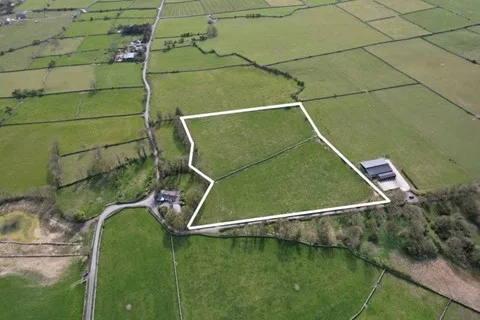Rebuilding from Within: A Community-First Framework for Rural Economic Growth By Damien Reilly

- Introduction
Across rural Ireland, communities have faced years of economic drift. While cities continue to attract investment, infrastructure, and opportunity, many small towns and villages struggle with declining local services, emigration of skilled workers, and the slow erosion of enterprise potential. The challenges are familiar: high rents, closed shopfronts, and long commutes to urban centres that drain both time and community life. Yet behind these challenges lies something powerful—resilience.
Rural communities have never lacked talent or work ethic. What they have lacked is targeted, practical support that reflects how local economies actually function. Large-scale investment strategies often overlook the micro-enterprises, family businesses, tradesmen, and service providers who form the economic backbone of regional Ireland. These actors rarely appear in economic forecasts, yet they are the ones delivering jobs, training young workers, and keeping money circulating in the local economy.
This article proposes a framework for what I call community-first development—an approach to rural economic growth that begins with those already doing the work. Drawing on my own experience across construction, hospitality, and technical services, I offer insights into the systemic barriers local enterprises face and outline realistic, implementable strategies to help communities rebuild from within. If we want lasting growth, we must stop waiting for distant solutions and start enabling what already exists.

- Barriers to Local Enterprise
Running a small business in Ireland often feels like operating in spite of the system rather than with its support. While national programmes promise assistance for entrepreneurs, the reality for many local enterprises is that access to meaningful support is slow, bureaucratic, or simply not aligned with the needs on the ground.
Planning is one of the first obstacles many local builders, tradesmen, and small developers encounter. Zoning restrictions, drawn-out application timelines, and inconsistent decision-making across counties make it difficult to secure the right site at the right time. For those hoping to renovate or repurpose vacant buildings—a common opportunity in rural towns—the process can take months, draining resources before a single job is created.
Finance is another challenge. Micro-enterprises and sole traders often lack the collateral or track record to meet conventional bank lending criteria. Grant schemes are available, but many are geared toward start-ups in the tech or export sectors, leaving traditional businesses—construction, hospitality, retail—outside the priority scope. Even when eligible, application forms are complex and time-consuming, discouraging many from applying altogether.
Red tape is an ever-present frustration. Whether it involves tax registration, health and safety certification, or managing multiple insurance requirements, small business owners spend too much time navigating administrative demands. Unlike larger firms with HR or legal departments, local businesses must manage compliance themselves, often at the cost of growth or innovation.
Coordination is perhaps the most overlooked issue. Supports exist across multiple agencies—the Local Enterprise Offices, county councils, Enterprise Ireland, LEADER groups—but they are rarely integrated. Business owners must chase answers across departments, repeating information and adapting to different rules. This disjointed system reduces the effectiveness of even the best-intended supports.
In my own work—whether managing construction teams, running a bar in Portugal, or operating a TV installation service—I have seen how fragmented and inflexible the system can be. Often, it is not ambition or effort that holds people back. It is the inability to navigate a system not built with their reality in mind. Until that changes, rural Ireland will continue to punch below its potential.

- A Community-First Development Model
If rural communities are to thrive, they cannot depend on occasional external investment or top-down policy cycles. Instead, they need a development approach that begins with local capacity and enables local action. This is the core principle of community-first development: placing the existing knowledge, networks, and enterprises of a place at the centre of economic strategy. It is not about waiting for big industry to arrive—it is about creating the conditions in which local businesses can grow, hire, and invest.
A community-first model begins with local procurement. Far too often, public contracts—even for basic services like maintenance, IT, or transport—go to companies outside the region, bypassing capable local providers. Councils and public bodies should adopt procurement strategies that prioritise qualified local businesses, creating a direct pipeline between public spending and local job creation. This keeps money circulating in the regional economy and builds confidence among small firms that their contribution is recognised.
The second pillar is skills and training hubs rooted in community needs. Many rural areas lack accessible facilities where young people can develop trade skills, digital literacy, or business knowledge. A community-first approach would co-locate training centres with enterprise units, offering mentorship, apprenticeships, and evening classes in partnership with local employers. These hubs could also serve as co-working and incubator spaces for start-ups, freelancers, and returning diaspora.
Third, the model must include micro-finance and local capital networks. While national grants have a role, local lending circles, credit unions, or community investment funds can offer flexible, relationship-based support for early-stage or informal businesses. These financial vehicles build trust and promote reinvestment by allowing small-scale lending with social accountability. Research has shown that community-based finance models can significantly improve access to credit in underserved regions (OECD, 2022).
Finally, there must be a coordinated effort to utilise vacant land and property. Rural towns are full of disused buildings and plots that could become enterprise spaces, workshop units, or housing for workers. A community-first strategy would map these assets and work with councils to streamline adaptive reuse policies. By turning what is idle into what is productive, communities can regenerate without waiting for new builds.
To deliver this model, I propose the creation of a Rural Enterprise Action Network (REAN)—a local partnership bringing together business owners, community leaders, educators, and policy facilitators. The REAN would act as a one-stop forum to identify needs, align supports, and co-design development initiatives based on what is actually needed, not just what looks good on paper.
In this way, economic development becomes something people participate in—not something that is done to them. As Pike, Rodríguez-Pose, and Tomaney (2017) argue, place-based development succeeds when it recognises the specific strengths, constraints, and opportunities of a locality. Community-first development is not just a model—it is a mindset, and one that rural Ireland is more than ready to adopt.

- Case Insights – Learning from Practice
The ideas behind community-first development are not abstract theories—they emerge directly from the lived realities of running businesses in rural and regional settings. Across my career, I have encountered first-hand the barriers, opportunities, and hidden potential within small communities. These experiences form the foundation of the model I now propose.
In the early 2000s, running Damien Reilly Construction, I managed a 13-person team delivering residential projects across Meath. Despite having the skills, the staff, and the work ethic, we repeatedly hit roadblocks in the form of planning delays and unclear regulations. Small decisions from planning offices—often made without understanding site conditions—could stall entire projects. In one case, an unnecessary delay on a boundary query cost a client their mortgage approval, despite the build being ready to commence. These moments showed me that rural development is not just about funding. It is about removing friction in the system and trusting people to deliver.
Later, while operating Reilly’s Irish Bar in Tavira, Portugal, I learned the value of place-based service. The bar became a meeting point for locals, tourists, and the Irish diaspora. It was also a source of employment, informal networking, and emotional support—something that economic reports rarely capture. I saw how one small venue, when embedded in a community, could create jobs, reduce isolation, and promote cultural exchange. This experience reinforced my view that economic development must include social and cultural factors if it is to be sustainable.
In 2019, I launched TV Pro, a regional home installation and tech services company. This venture allowed me to directly observe the ongoing demand for trades-based, home-based, and mobile businesses across rural Ireland. Despite delivering high-quality services, we often faced barriers to scaling due to gaps in digital infrastructure, a lack of local enterprise incentives, and the time-consuming nature of compliance processes. Even simple matters like securing short-term rental space for equipment storage proved difficult without a clear local enterprise pathway. It became evident that while the government spoke often about supporting small business, the available tools were not designed for practical, low-margin operations like ours.
These experiences demonstrate that local enterprise does not fail due to a lack of ambition or competence. It struggles because the current systems are fragmented, misaligned, or inaccessible. For example, coordinating between Local Enterprise Offices (LEOs), planning authorities, and finance bodies often requires more persistence than many sole traders can afford. As a business owner, I learned to persist. As a public servant, I believe we should simplify.
Studies have shown that local entrepreneurs are more likely to reinvest in their communities than external investors (Fitzgerald & Lenihan, 2020). They create jobs that are rooted in place, offer informal mentoring to young workers, and build social trust. Yet these contributions are rarely recognised in national development plans. By listening to what small business owners are already doing—and what they need—we can design systems that work with them rather than around them.
In practice, community-first development is already happening. It just needs support, recognition, and structure. The goal of any framework should not be to replace what exists, but to amplify and enable it.
- Policy Recommendations
If rural Ireland is to unlock its full economic potential, the systems that support enterprise must shift from generic offerings to locally responsive strategies. The following policy recommendations are designed to align with the principles of community-first development, addressing the barriers identified earlier and building on the lessons of real-world practice.
- Reform Local Enterprise Office (LEO) Mandates
LEOs should be empowered not just as funding gateways but as flexible development hubs. This includes the authority to approve small infrastructure grants, waive bureaucratic thresholds for micro-enterprises, and fund hybrid service models such as mobile trades, home-based services, or part-time businesses. Funding eligibility should be broadened to include traditional sectors like construction, retail, and hospitality, which often fall outside innovation-focused criteria. - Integrate County-Level Planning and Enterprise Teams
A single point of contact for planning and business development would remove unnecessary duplication and delay. Local authorities should create integrated development units that include both planning officers and enterprise advisors who co-review applications and offer practical guidance. This would enable quicker approvals for business premises, temporary facilities, or change-of-use projects that currently stall due to siloed processes. - Establish Rural Development Hubs and Training Centres
County councils, in collaboration with LEOs and education providers, should pilot multi-purpose rural hubs that offer shared workspace, accredited training, and business mentorship. These centres could be located in underused public buildings or repurposed town centres. They would serve as access points for young people, returning migrants, and unemployed individuals to upskill, network, and test business ideas. - Create a Rural Micro-Finance Guarantee Scheme
To address the finance gap, a tailored micro-finance scheme should be introduced at regional level, offering unsecured loans between €2,000 and €25,000 to sole traders, tradespeople, and small enterprises. Delivered through credit unions or local lending institutions, this scheme would be backed by government guarantees and prioritise relational lending models. Evidence from the European Microfinance Network shows that localised finance initiatives are more inclusive and effective in rural settings (EMN, 2021). - Map and Activate Vacant Commercial Assets
Local authorities should maintain a live database of vacant commercial properties and land, with simplified leasing and repurposing pathways. Public–private partnerships can be encouraged to turn these assets into viable business locations through low-cost rentals, tax incentives, or fit-out grants. Targeted policy tools like these can stimulate investment without requiring new construction. - Mandate Local Procurement Targets for Public Bodies
Every county council and publicly funded organisation should adopt local procurement policies with clear targets—for example, 30% of all non-specialised contracts under €50,000 should be awarded to businesses based in the local authority area. Transparent reporting would ensure fairness while driving local economic circulation. This approach reflects best practice from EU regional development strategies that emphasise proximity and circular economy principles (European Commission, 2020).
Together, these recommendations move beyond aspiration and into implementation. They do not call for massive new budgets but rather for coordination, simplification, and respect for the economic potential already embedded in rural communities. As Fitzgerald and Lenihan (2020) note, enabling local growth often requires policy to get out of the way as much as it does to provide support. What communities need is not a handout, but a fair system that meets them where they are and helps them go further.
- Conclusion and Final Call to Action
Rural Ireland does not need to be rescued. It needs to be recognised, respected, and enabled. Across towns and villages, in workshops, kitchens, home offices, and van cabs, people are already building the economy we claim to want—resilient, local, and rooted in community. The challenge is not a lack of effort or talent. The challenge is a set of systems that too often work against those doing the work.
This article has outlined a community-first model for development: one that prioritises local enterprise, accessible training, flexible finance, and practical collaboration between business owners and public authorities. The case insights and policy recommendations presented here are grounded in lived experience and designed to be implemented without requiring major structural upheaval. What they require is will, coordination, and the belief that real change can start small.
Too often, rural economic strategy is reduced to slogans or forgotten between election cycles. But if we are serious about balanced regional development, we must stop designing policies from afar and start co-creating them with the people who have the most at stake. As Pike, Rodríguez-Pose, and Tomaney (2017) argue, place-based development is not about rolling out national templates. It is about building from what is already working and removing the barriers that hold it back.
This is not a theory. It is a call to action.
If we listen to the builders, the traders, the family businesses, and the young people trying to stay in their hometowns, we will find that the solutions are already here. We just need to trust them, support them, and step aside when necessary.
Rebuilding rural Ireland does not mean starting over. It means finally supporting what is already in motion.
References
European Commission. (2017). Public procurement for a circular economy: Good practice and guidance. Publications Office of the European Union. https://circulareconomy.europa.eu/platform/en/knowledge/public-procurement-circular-economy
European Microfinance Network. (n.d.). European Microfinance Network: The voice of European microfinance. Retrieved May 28, 2025, from https://www.european-microfinance.org/
OECD. (2022). OECD Economic Surveys: Ireland 2022. OECD Publishing. https://www.oecd.org/en/publications/2022/12/oecd-economic-surveys-ireland-2022_144545ab.html
OECD. (2019). OECD Principles on Rural Policy. OECD Publishing. https://www.oecd.org/en/topics/sub-issues/rural-service-delivery/oecd-principles-on-rural-policy.html
Pike, A., Rodríguez-Pose, A., & Tomaney, J. (2017). Local and regional development (2nd ed.). Routledge.

